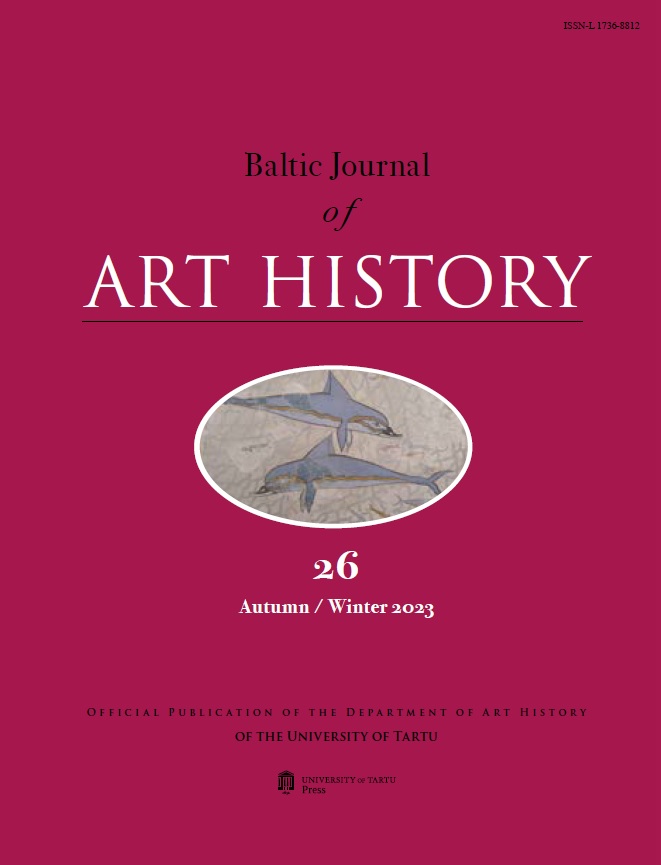Imagined Past and Future: Sustainability and Museums in the Anthropocene
DOI:
https://doi.org/10.12697/BJAH.2023.26.06Keywords:
Anthropocene, museums, sustainability, cultural transformation, artificial cultureAbstract
The purpose of this article is to analyse how the definition of a new
geological era affects museums. First, we will give an overview
of the development of the concept of the Anthropocene and its
connections with museums. One of the most obvious responses of
museums to the Anthropocene is the concept of sustainable or green museums.
It is a very extensive topic, of which we chose only one part,
specifically exhibitions, for analysis. As a case study, we took the If
Boxes Could Talk… exhibition in Tartu City History Museums, which
was completed as part of the Sustainable and Sustaining Exhibition
continuing education course at the Pallas University of Applied
Sciences. The exhibition explored, on the one hand, the application of
sustainability ideas in the preparation of a practical exhibition and,
on the other hand, the mechanisms of creating cultural sustainability
using the model of artificial cultures.
Anthropocene is a term that captures extremely important aspects
of the modern world. The central idea of the Anthropocene is the
inseparability of man as a biological being, nature, technology, and
culture. Man himself is both part of nature and a creator of culture,
a changer of nature, and a victim of technology. In fact, there is no
natural environment that has not been transformed by mankind,
either on Earth or even in near space. Sustainability and consideration
of the environment are deemed to be areas that ensure the seriousness
of museums in the 21st century. If we line up the most pressing
problems of the present time, we get quite a long list: climate change,
the price of energy, war in the middle of Europe, the recession, the
pandemic, and the rise of militant nationalism. Apparently, this
alarming list can be extended even further. The cluster crisis affects
different aspects of the environment and society and naturally also
affects museums, where sustainability is both a requirement and a
necessity.
Designing a sustainable world is, first of all, related to large-scale
cultural change. It is not news that a whole series of norms and
values characteristic of Western culture are such that they do not
fit into a sustainable world and are obviously the main obstacle to
the development of such a society. The expectation of continuous
economic growth, the desire for an increasingly better and more
abundant life, the expectation of continuous renewal, and the
glorification of success and competition are still the basic values of
our culture. To ensure sustainable development, changing people’s
values and behaviours, i.e., culture, is considered one of the key issues.
Changing culture is a difficult and confusing task, as culture tends
to be inert and rather difficult to change. People want to preserve
existing ideas, values, and traditions. Fortunately, the situation is not
completely hopeless. The solution is a completely different approach
to the whole bundle of problems. Instead of changing culture, we
have to create artificial cultures that meet our wants and needs. It is
a radically different solution to the task of culture change. Museums
have great potential to become leaders of cultural change. People trust
museums and consider them authoritative institutions. However,
how to start creating sustainable cultures is still open for the time
being. We started by telling stories. We used the concept of artificial
culture to describe purposeful cultural change. Artificial culture
offers a new conceptual approach to dealing with and practical
implementation of cultural change. Instead of changing the existing
culture, the focus is on creating a new culture. Artificial cultures
have great potential to solve sustainability problems, as they work
by changing people’s values and cultures, which are very often the
cause of the problems.

